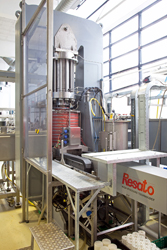Food of the future
As the planet's population grows and demand for quality food grows with it, the EU is looking at ways to provide safe, fresh and nutritious food to its citizens. The EU-funded project 'Novel processing methods for the production and distribution of high-quality and safe foods' (Novelq) worked on designing NP solutions to improve quality and increase the value of foodstuffs in Europe. The project aimed to safely extend the shelf life of vegetarian foods with a focus on traditional European cuisine, at the same time preserving texture, taste, nutrition and aroma as much as possible. It also aimed at advancing eco-friendly innovative processing that reduces waste, conserves energy and improves packaging. Novelq was based on a holistic strategy that considers every stage of the food chain, focusing on overcoming bottlenecks in research and development. It built a database on NP and packaging materials, studying changes of food exposure to NP methods such as high pressure (HP), pulsed electric field (PEF) and cold plasma. In parallel, the project investigated consumer perceptions of NP and discovered, among other findings, that they prefer PEF and HP fruit juice to pasteurised juice. It also found that consumers find HP more appealing than PEF juice on the whole, and that the new term 'micro pulse' sounds better than the ominous-sounding 'pulsed electric field'. Overall, Novelq made great strides in identifying the effects of edible coatings, HP thermal processing, cold plasma and PEF on food quality and food safety. It improved NP technology, enabling a deeper understanding of the functional and structural properties related to packaging materials, as well as of package-product interactions suitability related to certain polymers. The research will bring welcome advances related to food shelf life, environmental impact and industrial development, helping the food industry meet the needs of society in the 21st century.







